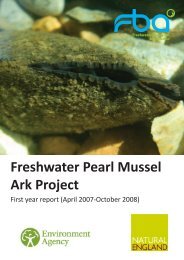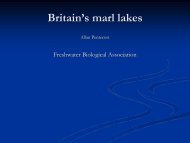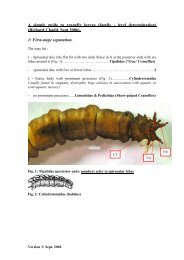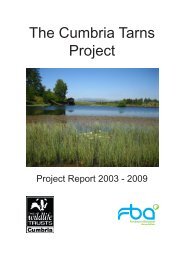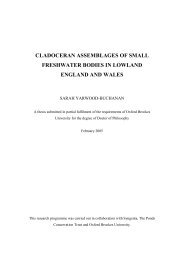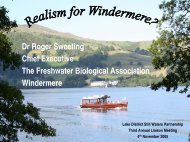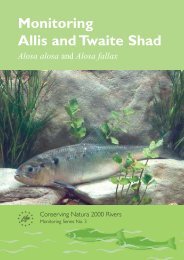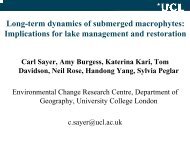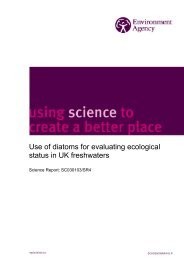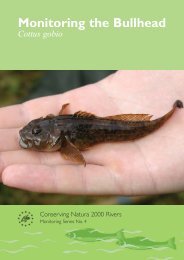Groundwater HIA post edit - FreshwaterLife
Groundwater HIA post edit - FreshwaterLife
Groundwater HIA post edit - FreshwaterLife
You also want an ePaper? Increase the reach of your titles
YUMPU automatically turns print PDFs into web optimized ePapers that Google loves.
Then, using the conceptual model, decide which of these water features may be<br />
deprived of water by the abstraction. Note that it is essential to identify at least some<br />
such features, because they will be needed in subsequent steps. It is usually helpful to<br />
prepare a sketch map showing these features, such as that shown in Figure 4.1.<br />
Figure 4.1 Sketch map of water features<br />
Part of the Section 32(3) process described earlier is a water features survey, the<br />
results of which are very useful for this step. The default search areas specified by the<br />
Environment Agency for water features surveys are shown in Table 4.2:<br />
Table 4.2 Default search areas for water features surveys<br />
Abstraction rate (m 3 /d) Radius of survey area<br />
Up to 20 100 m<br />
2–100 250 m<br />
100–500 500 m<br />
500–1,000 1 km<br />
1,000–3,000 1.5 km<br />
3,000–5,000 2 km<br />
Over 5,000 2 to 4 km<br />
In practice, the search radius is increased where: sensitive abstractions or<br />
environmental features are located just beyond the specified radius; the aquifer is<br />
confined; or where there is a high degree of uncertainty about the aquifer<br />
characteristics. In addition, the search radius, or the shape of the search area, should<br />
be varied depending on the understanding of the aquifer in the conceptual model. Note<br />
that the cyclical approach is valuable here, as information from Steps 7 and 8 below<br />
may contribute to the decision on the search radius. If necessary, a 'dry run' should be<br />
conducted through all the steps of the <strong>HIA</strong>, before returning to Step 3 and reaching a<br />
conclusion on the search area for water features.<br />
4.2.4 Step 4: Apportion the flow impacts<br />
Now apportion the flow impacts to those water features likely to be deprived of water by<br />
the abstraction, either as portions of the total abstraction quantity, or as percentages<br />
(making sure that the percentages add up to 100 per cent). In this example (shown in<br />
Figure 4.1), it has been decided from the conceptual model that the water features<br />
likely to be deprived of water by the abstraction are Spring A, a stretch of River A,<br />
26 Science Report – Hydrogeological impact appraisal for groundwater abstractions




